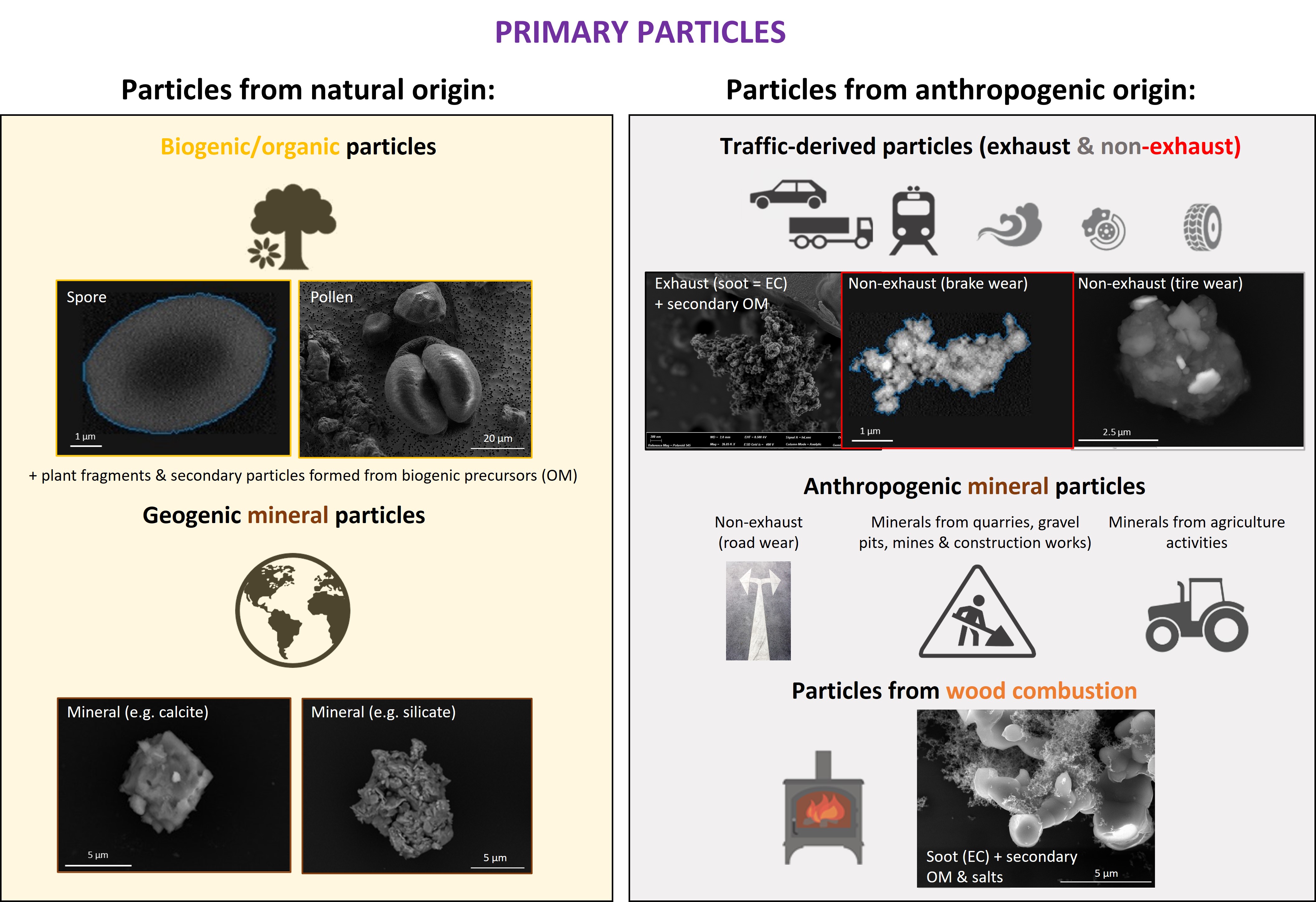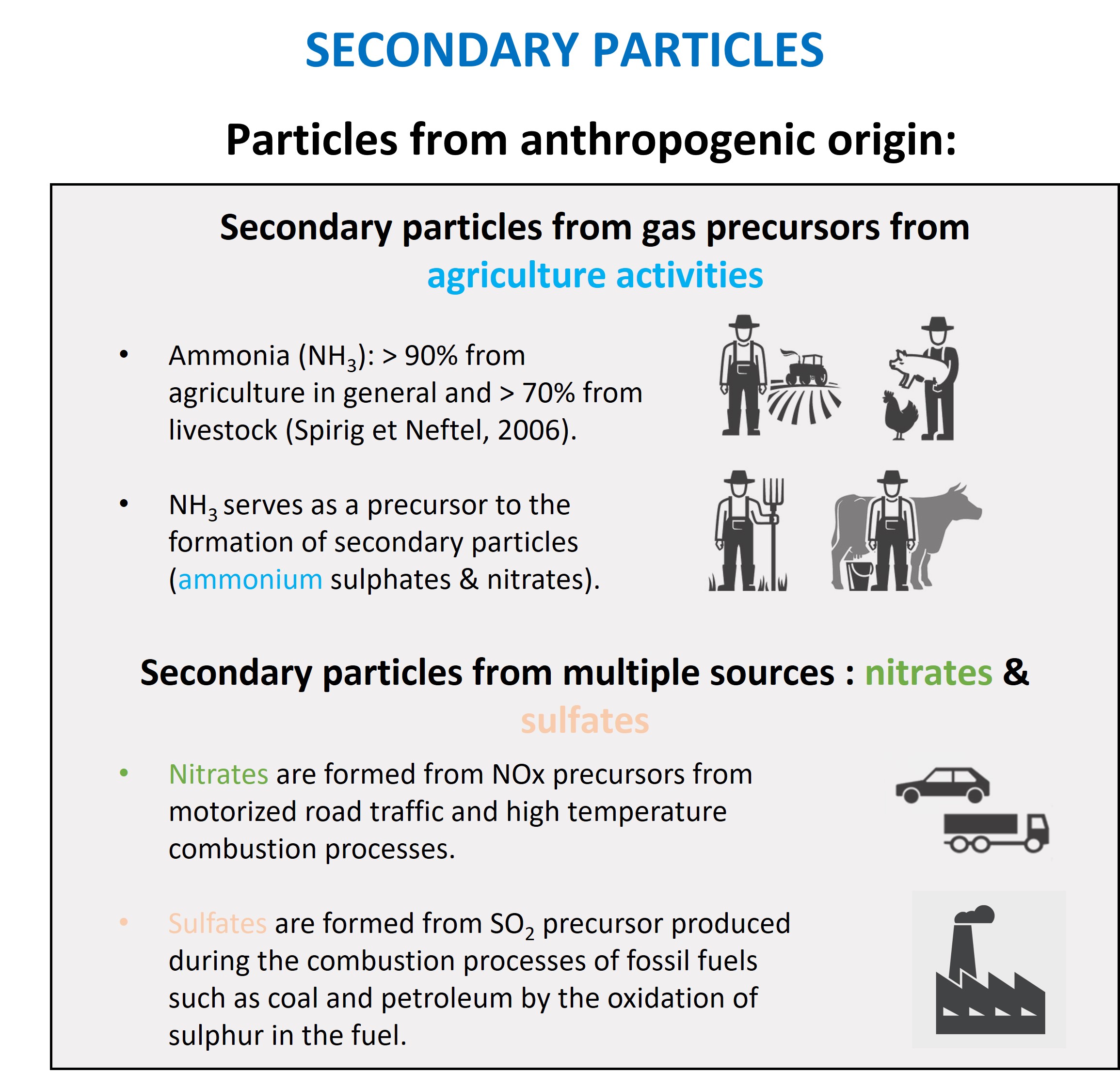What are PM10 and PM2.5 composed of?
We often hear the terms PM10 and PM2.5 in the context of environmental protection and health impact linked to airborne dust. But what are these parameters?
PM10 comprises the mass of all Particulate Matter (in other words: particles) with an aerodynamic diameter of less than 10 µm (micrometer = one millionth of a meter) (https://www.umweltbundesamt.de/en/topics/air/air-pollutants-at-a-glance/particulate-matter-pm10). Particles with an aerodynamic diameter lower than 2.5 µm are referred to as PM2.5.
Contrary to what one might expect, PM10 and PM2.5 are not composed of a single contaminant such as a specific gas. It is a cocktail of different particle types with diverse chemical compositions, sizes, shapes, solubility, etc., and thus varying toxicity. Fine dust stems from multiple sources that contribute to the total dust in different proportions depending on the situation (e.g. rural, urban, industrial, traffic sites, etc.).
Thus, PM10 and PM2.5 are heterogeneous mixtures of particles, which can be divided in two main groups (Figures 1 and 2):
Primary particles, which are the direct result of particulate matter emissions such as (a) soot from wood or fossil fuel combustion, (b) non-exhaust traffic-derived particles like tire wear, brake wear and road wear, (c) mineral particles from multiple sources including quarries, gravel pits, mines, construction works, road wear, and agricultural activities (all of anthropogenic origin) and natural sources like soils, Saharan dust, etc., (d) biogenic natural particles like pollen, spores and plant fragments, (e) microplastics (including road marking and bitumen and the previously mentioned tire wear particles), (f) industry-specific PM emissions like metal oxides, glass, and various materials from recycling activities, etc. Even though, primary particles can suffer some changes in composition and appearance upon environmental exposure (e.g. tire wear: Rausch et al., 2022), they mostly maintain their basic original characteristics making a straightforward source apportionment possible.

Figure 1: Primary particles
The other main group consists of secondary particles, which form from gas precursors in the atmosphere. Thus, particles or their precursors can originate far away from the measuring point. It is, therefore, difficult to link them directly to the emission source. Furthermore, the resulting particle can be formed from an anion emitted from a completely different source than its companion cation. Components of secondary particles include nitrates, sulfates, ammonium, soluble potassium, calcium, sodium, chlorine, diverse secondary organic aerosols, among others.

Figure 2: Secondary particles
Primary PM and precursor gases of secondary PM can have both, anthropogenic (i.e. human-induced) and non-anthropogenic (i.e. natural) sources. Thus, to understand PM pollution, the particles composing the dust need to be differentiated.
